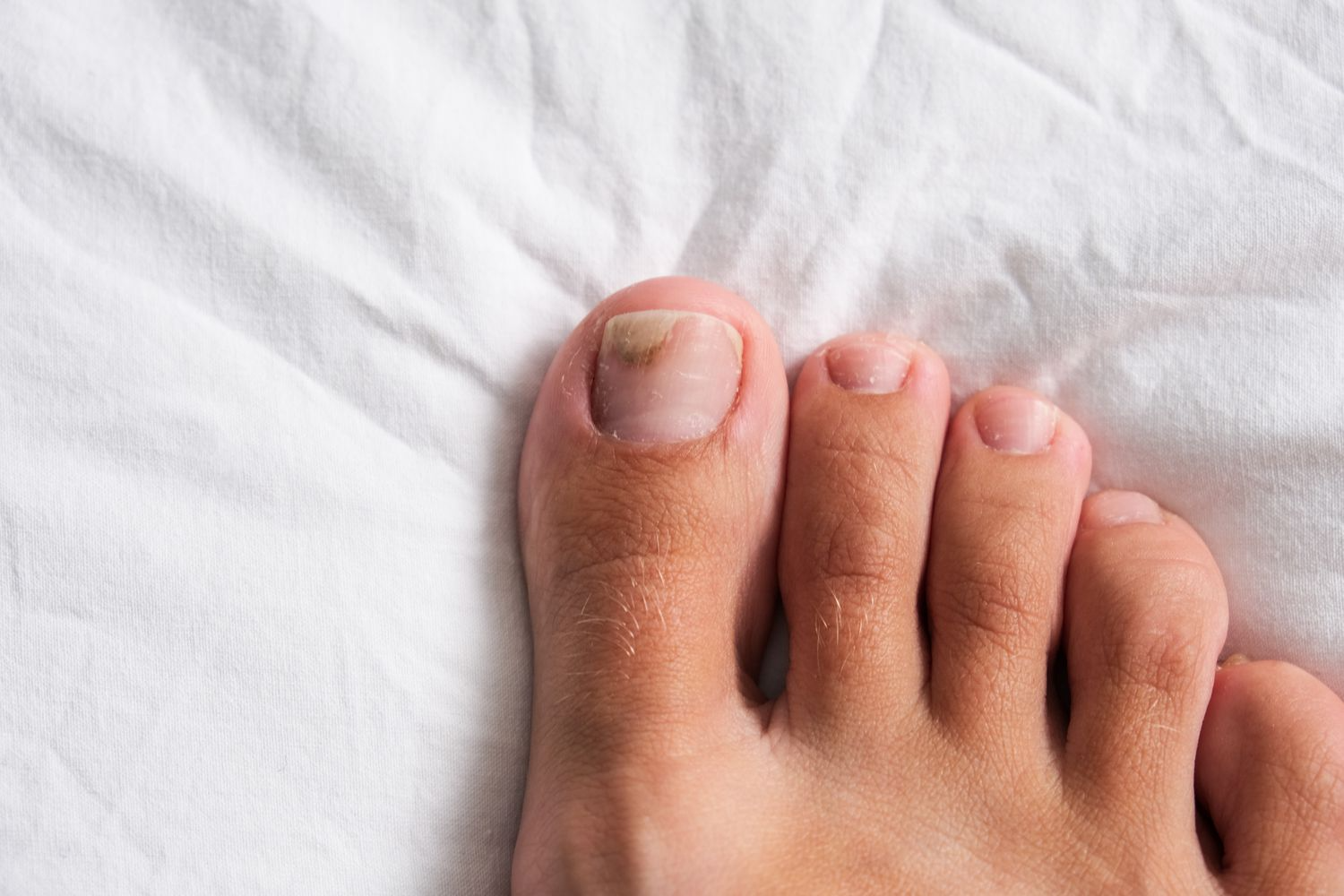Toenail Fungus | Onychomycosis in Allentown

Toenail fungus is a fungal infection of the nails of your toes. Known as onychomycosis, an infection may begin as a whitish or yellowish spot under the tip of your toenail. As the fungal infection spreads, it may cause your nail to discolor, thicken, and start to crumble at the edges – a potentially painful and unsightly problem.
A toenail fungal infection is not due to poor hygiene – it occurs when fungus enters the nail through a small cut or break in the toenail. Fungi, microscopic organisms which thrive in dark, damp places like gym showers and locker rooms, multiply quickly inside socks and shoes which are damp most of the day. Since toenails have less blood flow than the rest of your body, fighting a fungal infection becomes difficult.
Elderly patients are particularly at risk for fungal infections of toenails, due to their diminished blood circulation and the slower growth of their nails. Infections are also more likely to occur in men than women, especially those with a family history of toenail infection.
Onychomycosis can become quite painful and cause permanent damage to your nails. If you have a suppressed or weakened immune system (leukemia, AIDS, organ transplant recipients), a fungal infection of your toenails can lead to other, more serious infections which may spread beyond your toes.
Diabetic patients are also at high risk, as blood circulation and the nerves in their feet may be impaired due to diabetic peripheral neuropathy, making healing difficult. Diabetics also may contract cellulitis, a potentially serious bacterial skin infection. Learn what to look for on our page about foot and ankle healthcare for diabetics.
You can avoid getting toenail fungus infections by always wearing flip-flops or sandals in warm, damp, public areas like gym locker rooms, public showers, and swimming pools; keeping the inside of your shoes dry and wearing clean socks every day; drying your feet thoroughly after bathing; wearing socks made from materials like cotton or wool that absorb moisture from your feet; wearing shoes made from natural materials which allow air and moisture exchange; and using antifungal powder daily.
A toenail fungal infection will not clear up on its own and must be treated with medications or by laser removal of the fungus. As soon as you see the first signs of a toenail fungus infection (tiny white or yellow spot under the nail), seek treatment from a podiatrist.
Learn about PA Foot and Ankle’s state of the art laser treatment of toenail fungus
Symptoms of toenail fungus infection may include :
- White or yellow spots on toenail
- Thickened toenail that is brittle, crumbly, and ragged at edges
- Nail is misshapen and dull, with no shine
- Nail has become darkened or yellow
- Nail may become separated from nail bed
- Slight pain in the tips of your toes
- Foul odor produced by infected toenail
Causes of toenail fungus infection
- Aging
- Tendency to perspire heavily
- History of psoriasis
- Going barefoot in damp, public places
- History of athlete’s foot
- Circulation problems, diabetes, or weakened immune system
- Previously damaged or infected toenail
- Heredity – family history of toenail fungal infection
- Socks and shoes which don’t let feet breathe
- Working in a moist or humid environment
Treatment for toenail fungus infections
Your podiatrist at PA Foot and Ankle Associates may recommend one or more of these treatments to manage your toenail fungus:
- Prescription oral antifungal medications
- Prescription antifungal nail polish
- Topical antifungal medications
- Laser treatment to eliminate the fungus
- In severe cases, surgery may be necessary to remove the toenail


